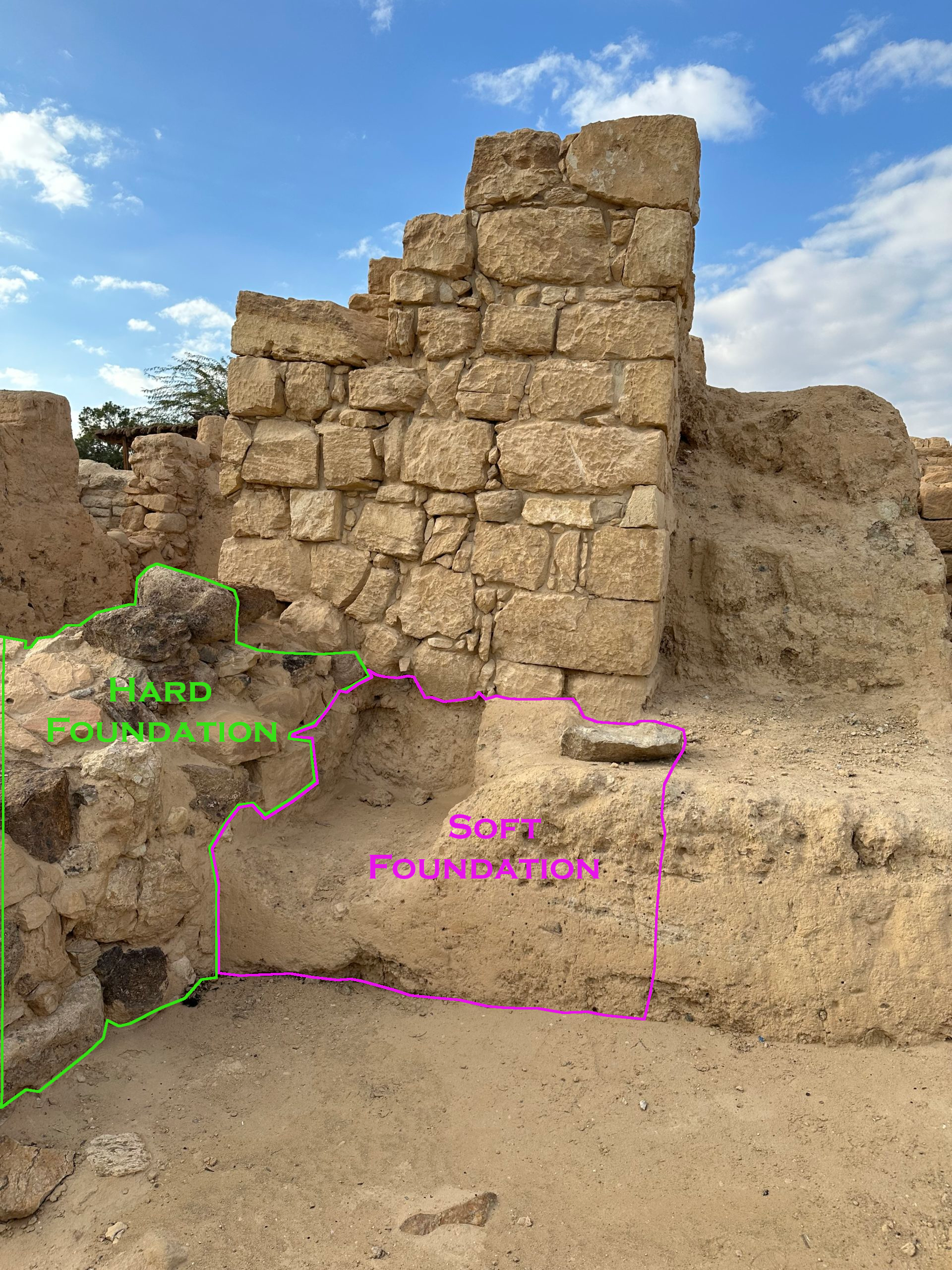Tilted Gate Earthquake (?) - Iron IIB-C

Ben-Ami et al. (2024) used radiocarbon to produce an absolute
chronology for the so-called
Early Fortress of Stratum VIII and
the so-called
Middle Fortress of Stratum VII.
Stratum VIII ended in ~950 BCE, while both phases of Stratum VII (A and B)
were dated between ~950 and ~900 BCE.
Ben-Ami et al. (2024) assigned Stratum VIII to Iron Age I and
both phases of Stratum VII to Iron Age IIA – which appears to follow
Finkelstein’s
Low Chronology.
The date ranges of
Ben-Ami et al. (2024) were supplemented with pottery, cross-checked
with radiocarbon dates from nearby sites, compared to architectural
styles of the time, and evaluated against regional historical trends.
Ben-Ami et al. (2024) argue that during the Early Iron Age IIA
(Stratum VII), "'En Ḥaṣeva was associated with copper trade from
Khirbet en-Naḥas in Wadi Faynan". They also concluded that
abandonment at the end of Stratum VII (~900 BCE) was not caused by
Pharaoh Shoshenq I’s ~925 BCE campaign in southern
Canaan. After this abandonment, the site remained deserted
for nearly a couple of centuries showing no trace of later
occupation activity
, until the immense fortress established at
ʿEn Ḥaṣeva over the abandoned building (Stratum VI) opened a new
chapter in the site’s history, dating to the Iron Age IIB–C
.
Cohen and Yisrael (1995) suggested that the
so-called Middle Fortress of Stratum VII was damaged by one of the
Amos Quakes, while
Austin et al. (2000) and others
proposed that the tilted wall in the
Casemate Gate
was tilted by one of these earthquakes. However, Doron
Ben-Ami (pers. comm., 2024) reports that this Casemate Gate
pier belongs to Stratum VI,
constructed nearly two centuries after ~900 BCE, placing it outside
the window of the Amos Quakes (~760 BCE).
Although the Amos Quakes are thus excluded, a later earthquake could
still explain the tilt; yet other walls show no similar movement.
Ben-Ami (pers. comm., 2024) notes that the tilted casemate pier is
underlain by layered sediment similar to that beneath Building 3011
(see
Ben-Ami et al. 2024), while
Roberts (2012: 187–189) observed that floors were
absent beneath the casemate walls — all indicating a weak foundation
and suggesting that
differential settlement
, not seismic tilt, caused
the deformation.
In its current post-excavation state, the wall rests on an earlier
stone foundation over stratified sediment, and the tilt (with a fresh
fracture line) occurs along the interface between the stone
foundation and the stratified sediment — again consistent with
differential settlement.
While this seems to eliminate the Amos Quakes as the cause of damage
at ʿEn Ḥaṣeva, an Event Probability of possible to unlikely is
assigned pending final publication of the excavation report and
further chronological revision as new work on the site continues.



